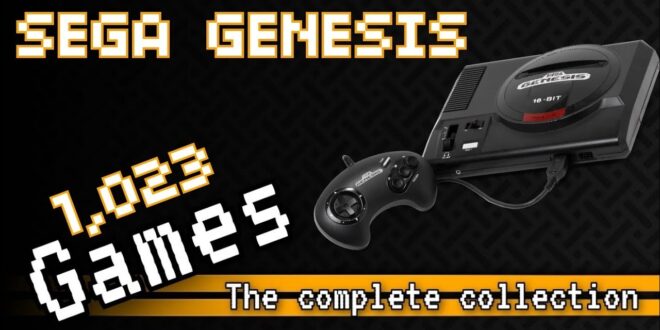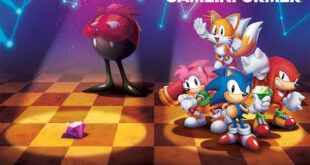Enjoy our comprehensive retrospective as we showcase each and every one of the classic games developed for the Sega Genesis in this captivating video journey.
Sega Genesis: The Console That Redefined a Gaming Generation
The Sega Genesis, known as the Mega Drive outside North America, is a piece of gaming history that many of us hold dear. Launched in 1988 in Japan and 1989 in North America, the 16-bit era was defined by its fierce rivalry with Nintendo’s SNES, a battle that would be remembered as the ‘console wars’. With its impressive specifications for the time, it brought an arcade-like experience into the living room.
Specifications and Design
The Sega Genesis boasted a Motorola 68000 CPU clocked at 7.6 MHz and was complemented by a Zilog Z80 sub-processor, which would also handle sound duties alongside the Yamaha YM2612 sound chip. The result was a powerful, multi-channel sound that could pump out some of the most iconic video game music of the era. The system had 72 KB of RAM, which doesn’t sound like much by today’s standards, but was quite impressive at the time. The graphics were powered by a dedicated video display processor that could handle a palette of 512 colors and output a resolution of 320×224, making games look remarkably sharp and vibrant.
A Brief History
The Genesis found its footing in North America with the release of “Sonic the Hedgehog” in 1991, which became the console’s mascot and offered a blistering-fast gameplay experience that seemed to leapfrog over what was available on other home consoles at the time. It showcased the Genesis’s ability to handle rapid scrolling and detailed sprites, making it a must-have for many gamers, myself included.
Personal Reflection and System Review
I remember the first time I saw “Altered Beast” at a friend’s house. To be honest, I wasn’t impressed. It was a fine game, sure, but it didn’t hook me. That all changed with the announcement and release of “Sonic the Hedgehog”. The blue blur’s speed, the vibrant levels, and the catchy music—it was enchanting. Suddenly, the Sega Genesis was the console I had to have.
The rental culture was in full swing then, and I vividly recall renting the system and a game—usually “Sonic”, of course—from the local video store during the chilly fall months leading up to an epic Christmas. The anticipation was palpable each time I returned the console, counting down the days until I could dive back into the worlds Sega had crafted.
Then Christmas arrived, and with it, my very own Sega Genesis. It’s a moment of pure childhood joy, a testament to the love and sacrifice of parents. My mom, bless her, did everything to ensure I had these experiences. She knew the joy these “silly games” brought to me and went out of her way to make sure I had access to them. She’s no longer with us, but every time I play the samw Genesis games I played as a kid, I can remember her smile and the joy we shared on that Christmas day. Rest in peace, mom.
Legacy and Impact
The Sega Genesis was more than a console; it was a cultural touchstone. With a library of over 900 games, it was home to many classics like “Streets of Rage”, “Shinobi”, “Golden Axe”, and, of course, “Sonic the Hedgehog”. It also introduced an early attempt at online gaming with the Sega Channel, and the Genesis’ 6-button controller would become the standard for future gamepads.
In conclusion, the Sega Genesis wasn’t just a box of wires and chips—it was a gateway to new worlds, a shared experience between friends and family, and a symbol of childhood wonder. It may not have won the console wars by the numbers, but for those of us who experienced its glory, it won something much more significant: our hearts.
 Retro-Replay.com Retro gaming reviews, news, emulation, geek stuff and more!
Retro-Replay.com Retro gaming reviews, news, emulation, geek stuff and more!




